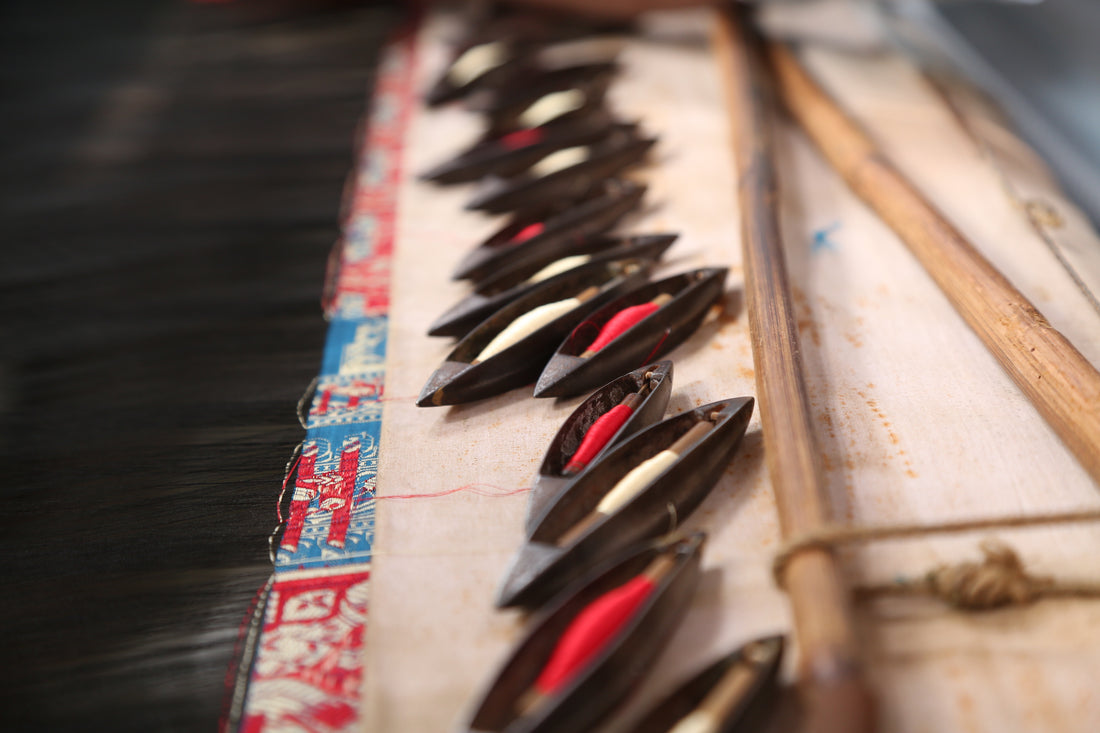
Beautiful Balucharis: Narrative Silks of West Bengal
Darshan Shah, Founder, Weavers Studio and Weavers Studio Resource Centre, in Kolkata (formerly Calcutta), West Bengal state, India, has been deeply involved in handmade textiles for the past thirty years. She shares her thoughts on Baluchari weaves that are striking for their narrative designs.
Guest edited by Brinda Gill
Brinda Gill: Please could you give us a glimpse of the traditional textiles of West Bengal
Darshan Shah: The state of West Bengal located in eastern India and the neighbouring country of Bangladesh previously formed one contiguous region known as Bengal. The region was partitioned at the time of India's independence in 1947. It has been famous for its hand-woven textiles since ancient times. The most celebrated were diaphanous muslins that were hand-woven from fine yarns that were hand-spun from Phuti Karpas, a cotton plant indigenous to Bangladesh. The region, home to communities of skilled artisans, has kept alive its rich textile heritage.
A spectrum of traditional textile techniques are practised in West Bengal. From intricate Nakshi kanthas embroidered by women to majestic, embroidered quilts from Satgaon, sheer muslins and fine Jamdanis from Sonargaon, lustrous silks from Malda, fascinating narrative Balucharis from Murshidabad, hand-block printed textiles from Baharampur and Serampore, and saris with woven figurative borders from Santipur and Tangail, the span of traditional techniques is admirable.

BG: Please tell us about Baluchari weaves
DS: Baluchari weaves are synonymous with a combination of particular yarns, texture, colours, motifs and format. The weave flourished during the 18th and 19th centuries, when saris, sashes, shawls, table cloths, scarves of a unique design were woven. Balucharis are woven with fine lustrous silk yarns, and the motifs/patterns are woven with supplementary silk yarn. Deep maroons, reds, chocolate, oranges and purples were traditional favourite hues.
Guest edited by Brinda Gill
Brinda Gill: Please could you give us a glimpse of the traditional textiles of West Bengal
Darshan Shah: The state of West Bengal located in eastern India and the neighbouring country of Bangladesh previously formed one contiguous region known as Bengal. The region was partitioned at the time of India's independence in 1947. It has been famous for its hand-woven textiles since ancient times. The most celebrated were diaphanous muslins that were hand-woven from fine yarns that were hand-spun from Phuti Karpas, a cotton plant indigenous to Bangladesh. The region, home to communities of skilled artisans, has kept alive its rich textile heritage.
A spectrum of traditional textile techniques are practised in West Bengal. From intricate Nakshi kanthas embroidered by women to majestic, embroidered quilts from Satgaon, sheer muslins and fine Jamdanis from Sonargaon, lustrous silks from Malda, fascinating narrative Balucharis from Murshidabad, hand-block printed textiles from Baharampur and Serampore, and saris with woven figurative borders from Santipur and Tangail, the span of traditional techniques is admirable.

BG: Please tell us about Baluchari weaves
DS: Baluchari weaves are synonymous with a combination of particular yarns, texture, colours, motifs and format. The weave flourished during the 18th and 19th centuries, when saris, sashes, shawls, table cloths, scarves of a unique design were woven. Balucharis are woven with fine lustrous silk yarns, and the motifs/patterns are woven with supplementary silk yarn. Deep maroons, reds, chocolate, oranges and purples were traditional favourite hues.
Want to read more of this article?
We are proud to be a subscriber-funded publication with members in 185 countries. We know our readership is passionate about textiles, so we invite you to help us preserve and promote the stories, memories, and histories that fabric holds. Your support allows us to publish our magazine, and also ‘what's on’ information, and subscription interviews, reviews, and long-read articles in our online blog.
ALREADY A SUBSCRIBER? CLICK HERE TO ACCESS CONTENT

